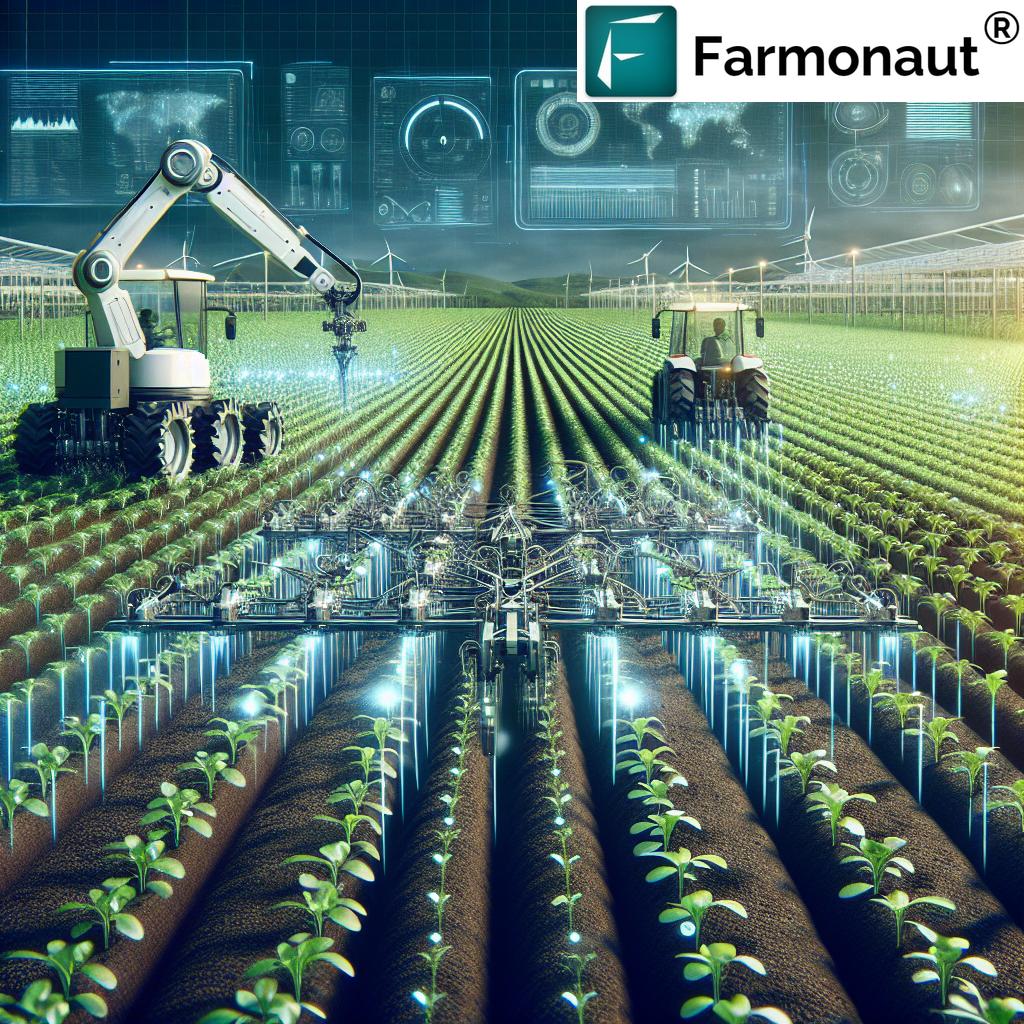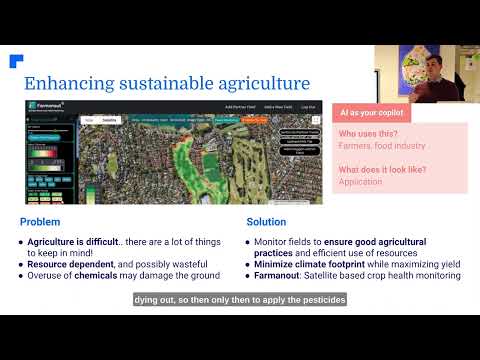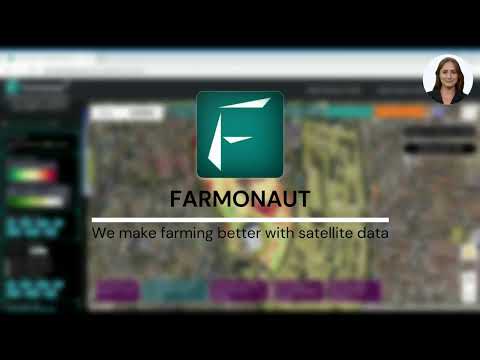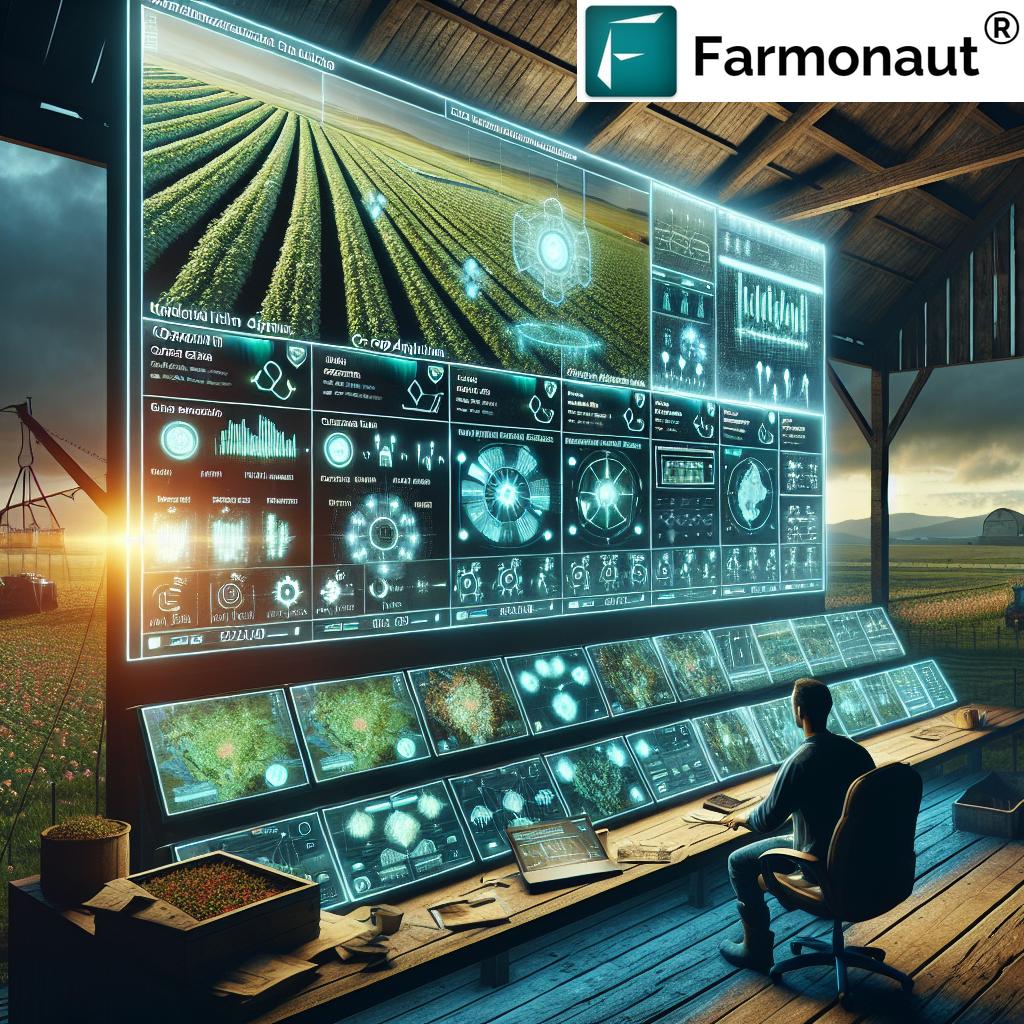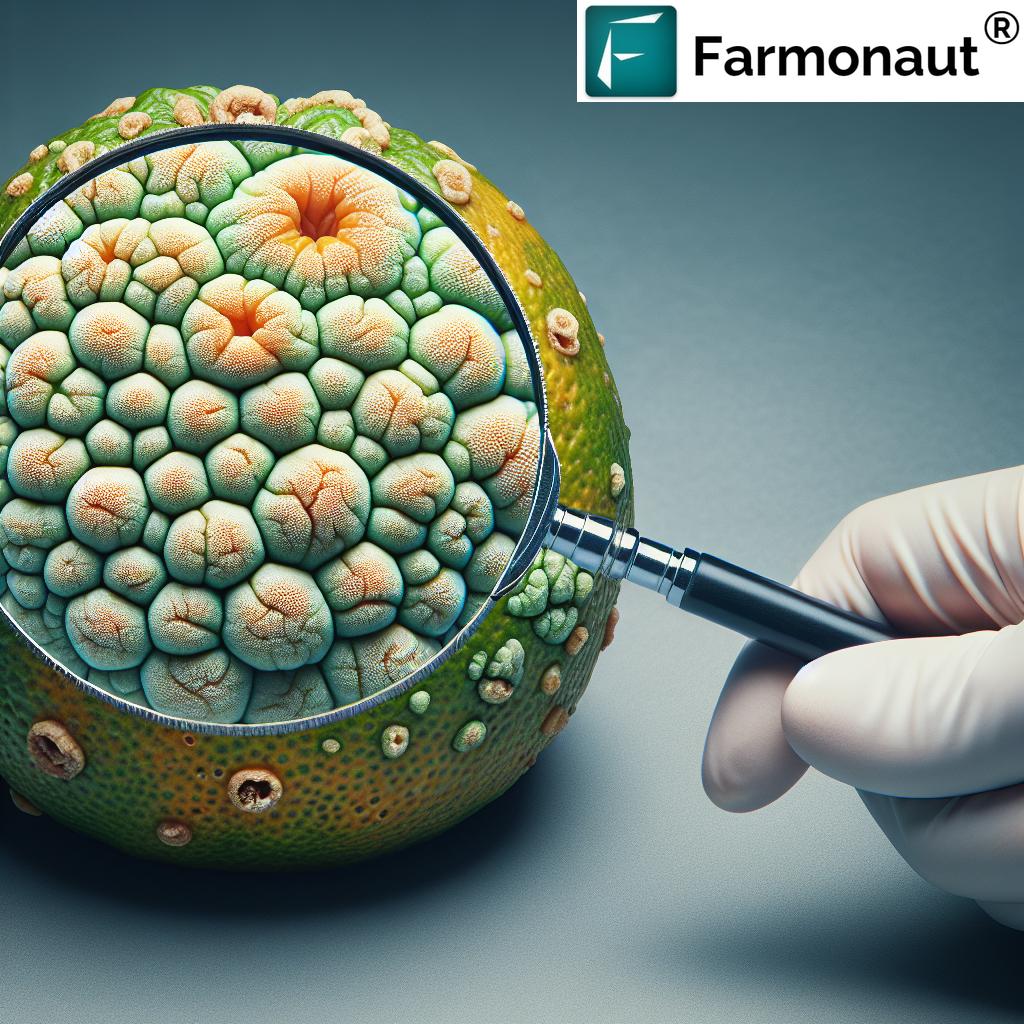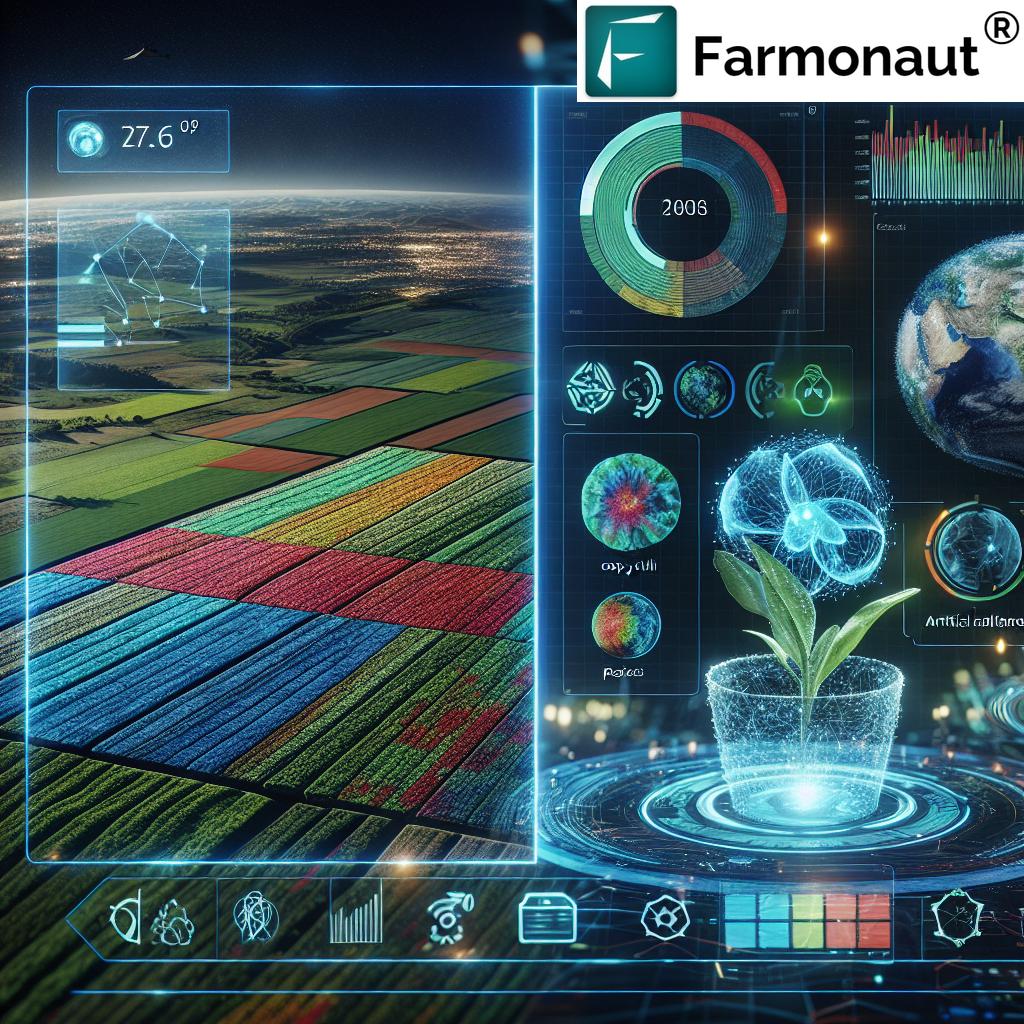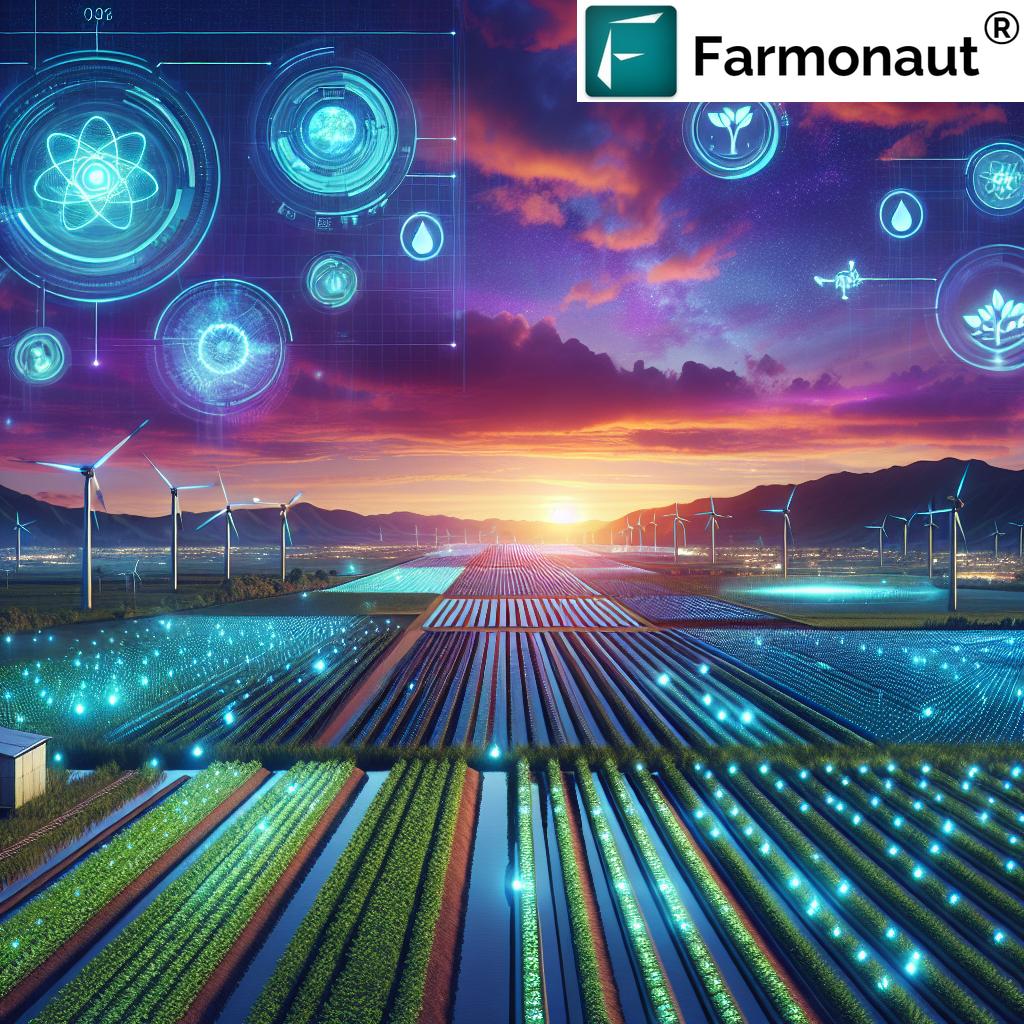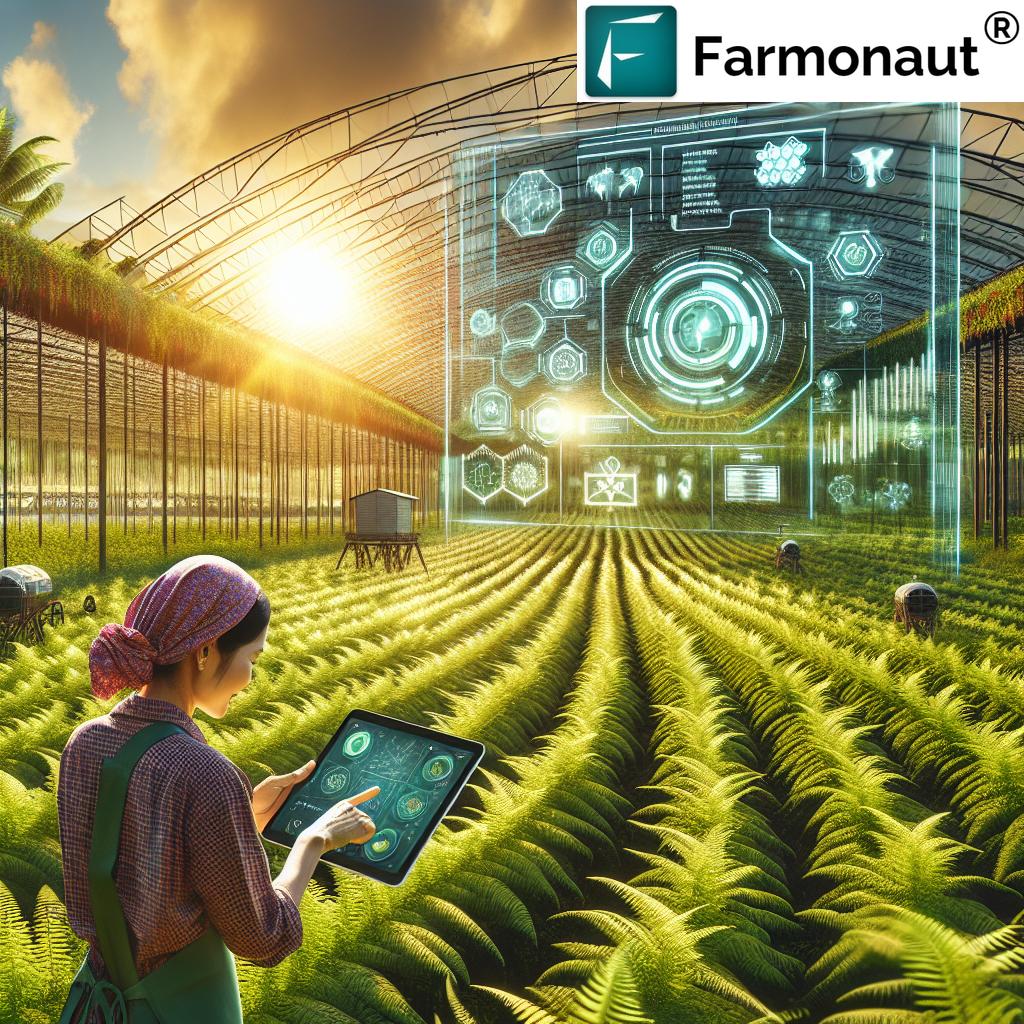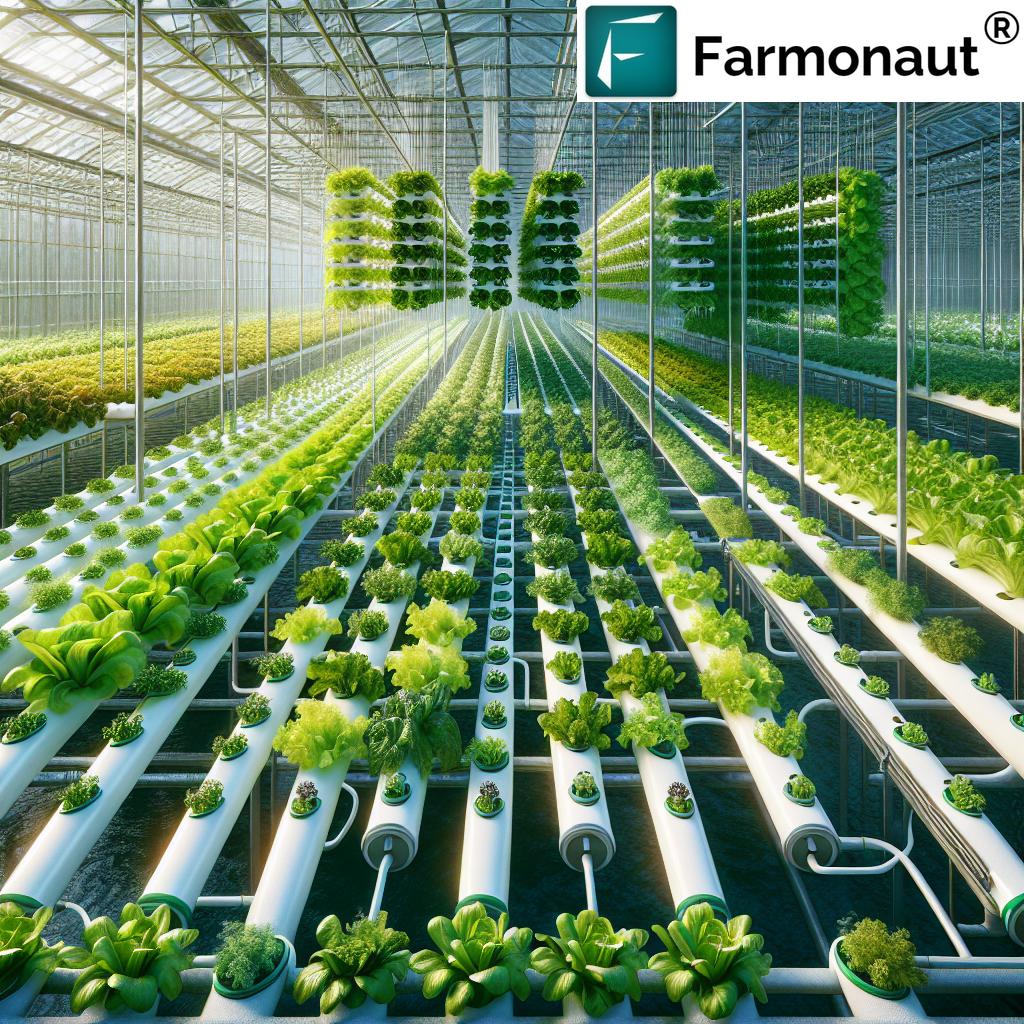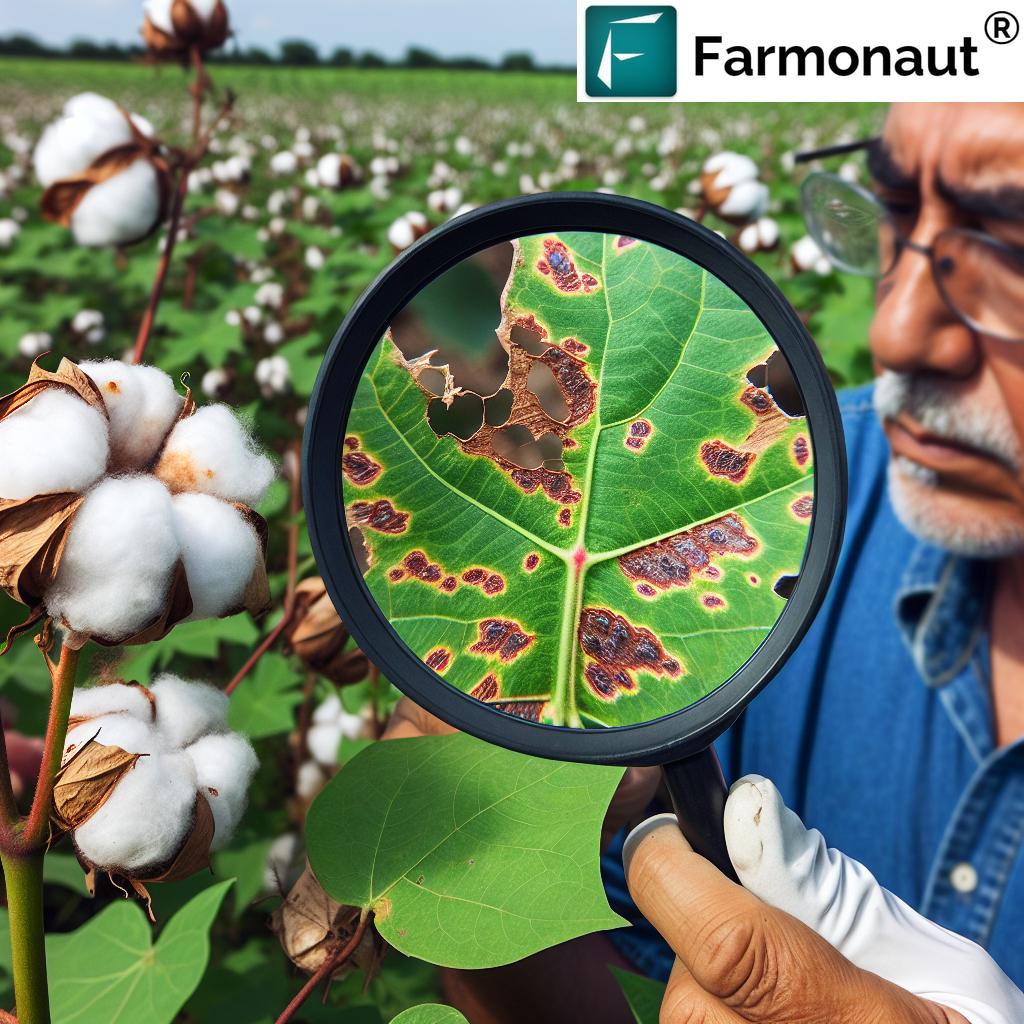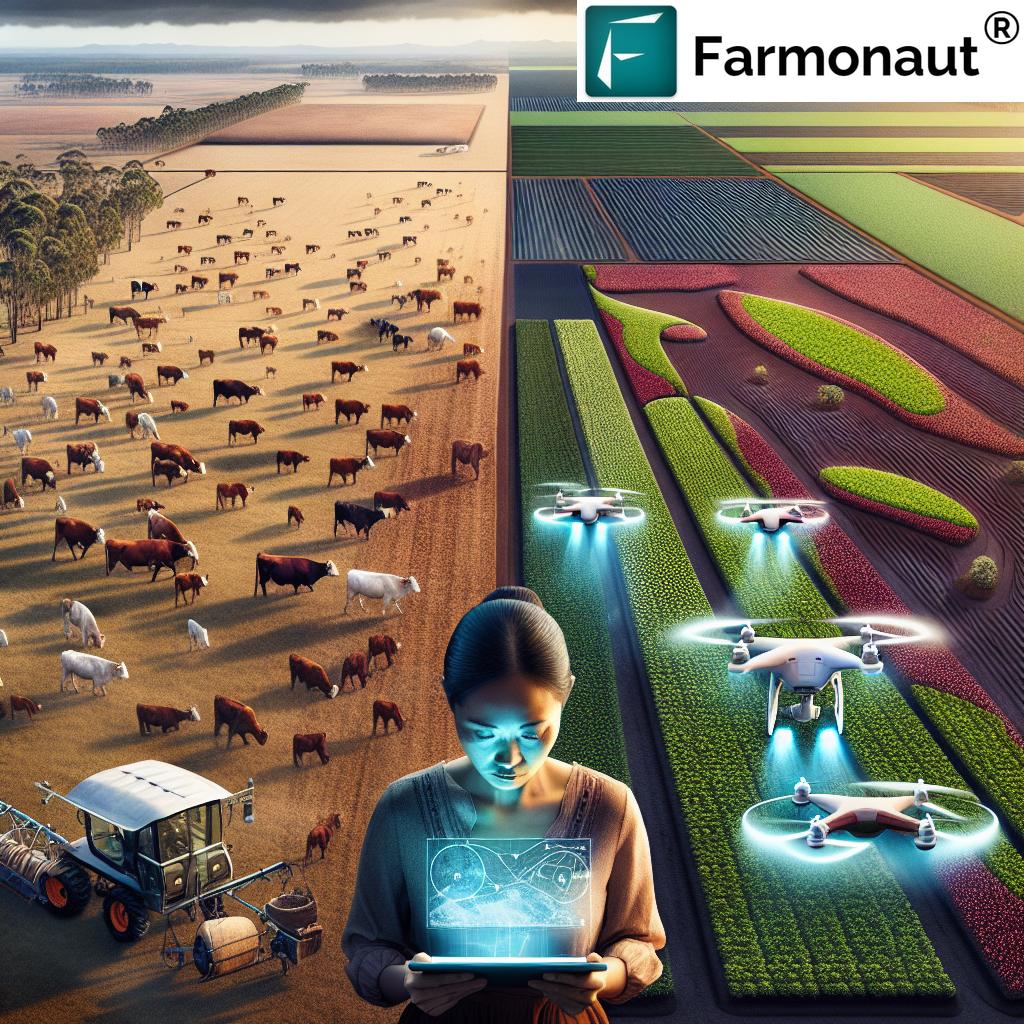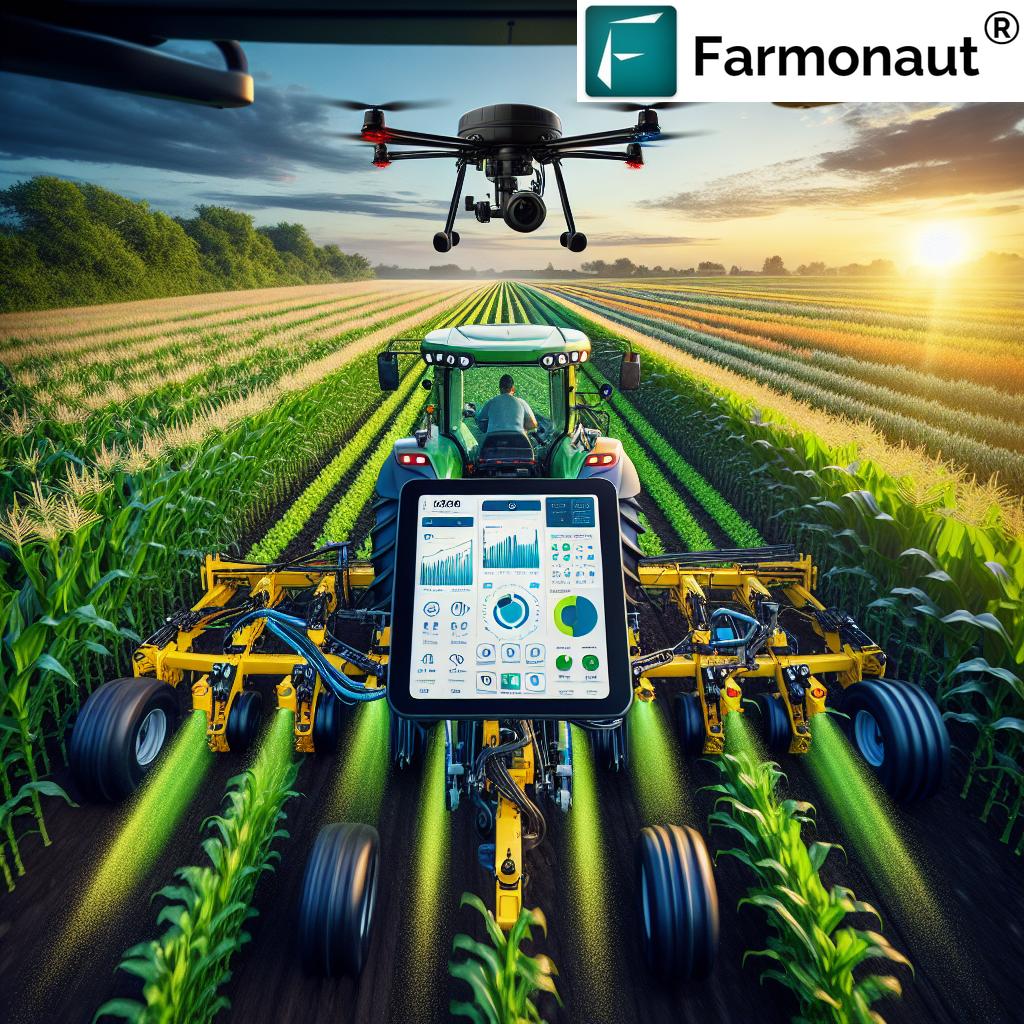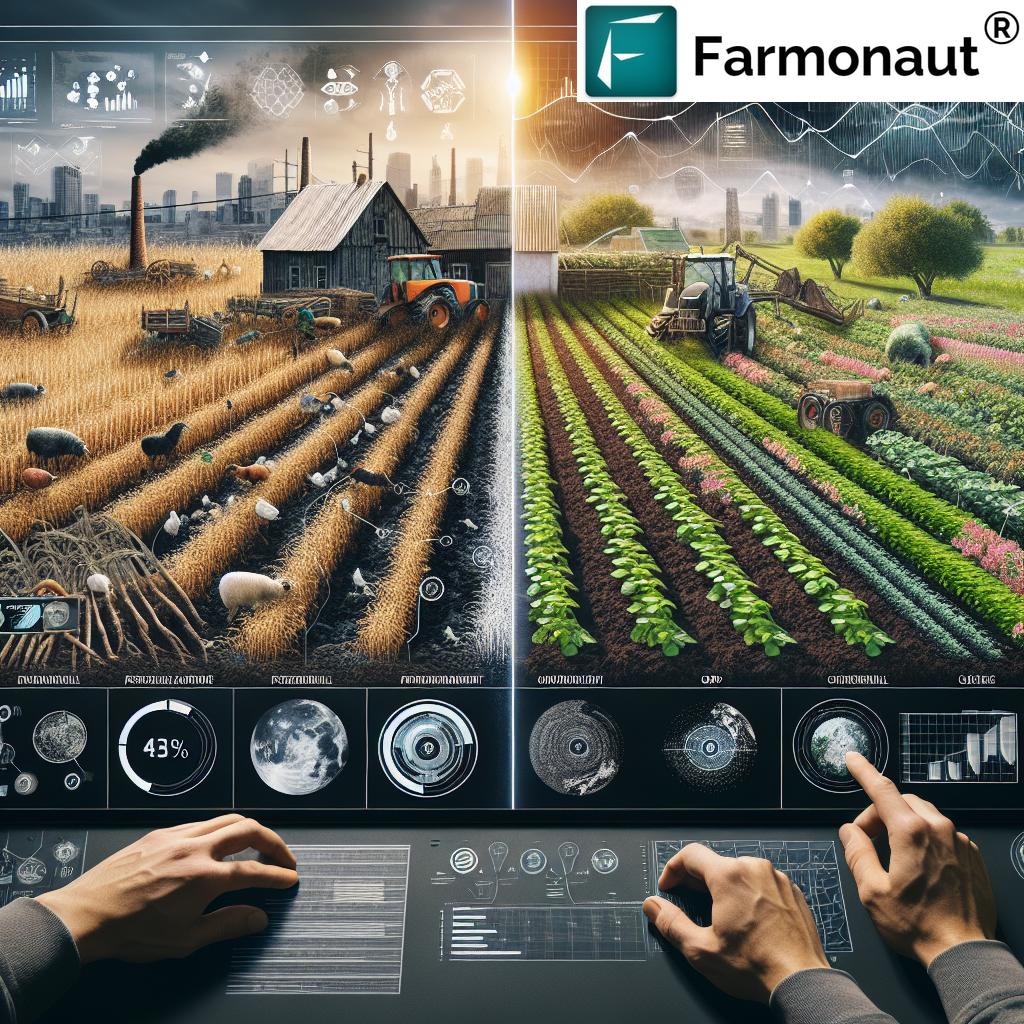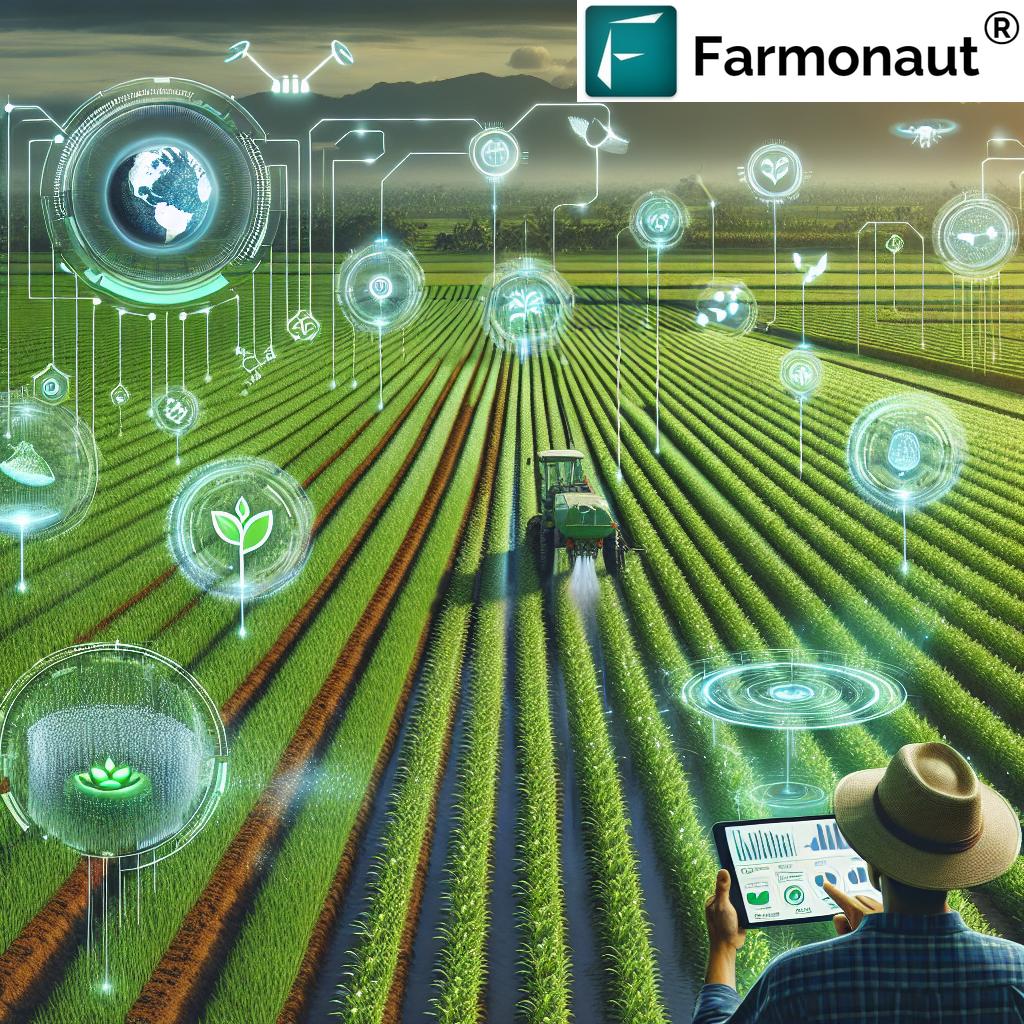Automated Farming: 7 Powerful Ways Tech Boosts Crop Yields
Automated farming systems are transforming agriculture globally, enabling farmers to increase crop yields, streamline operations, and foster sustainability. Let’s explore the seven powerful ways technology—driven by precision agriculture and advanced automation—revolutionizes how we manage, monitor, and enhance crop productivity.
Table of Contents
- Introduction to Automated Farming Systems
- Trivia
- Key Technologies Powering Automated Farming
- 7 Powerful Ways Tech Boosts Crop Yields
- Farmonaut: Leading Smart Farming Solutions
- Comparison Table: Automated Farming Technologies and Crop Yield Impact
- Major Benefits of Automated Farming Systems
- Challenges in Adopting Automated Farming
- Global Smart Agriculture Initiatives
- Future Outlook of Automated Farming
- FAQ: Automated Farming & Precision Agriculture
- Get Started with Automated Farming Technology
“Automated farming can increase crop yields by up to 30% using AI-driven precision agriculture techniques.”
Introduction to Automated Farming Systems
As challenges like climate change, soaring food demand, and labor shortages redefine agriculture, automated farming—often called precision agriculture or smart farming solutions—has taken center stage. By integrating artificial intelligence (AI), robotics, the Internet of Things (IoT), and real-time data, these systems empower farmers with precise control over planting, irrigation, fertilization, and crop management.
Through automating repetitive tasks, enhancing resource efficiency, and delivering actionable insights via data-driven farming practices, these innovations optimize yields while promoting sustainability. Let’s dive deeper into the transformative power and practical applications of these technologies.
Key Technologies Powering Automated Farming
The backbone of automated farming systems comprises several innovative technologies that collectively reshape the agricultural landscape:
- Robotics & Automation: Mechanical systems, from planting robots to automated weeders, reduce dependency on manual labor and increase the speed and precision of critical tasks like weeding and harvesting.
- Drones: Equipped with high-resolution cameras and sensors, drones for crop monitoring capture detailed aerial imagery to rapidly assess crop health, detect diseases, and measure moisture and nutrient levels.
- Automated Irrigation Systems: Using sensors that monitor soil moisture levels and weather conditions, these systems intelligently deliver water, minimizing waste and boosting efficiency.
- Artificial Intelligence & Machine Learning: AI in agriculture leverages advanced algorithms to analyze data from satellites, field sensors, and weather stations—predicting performance, detecting issues, and recommending optimal practices.
- Precision Fertilization: Smart systems accurately meter nutrients tailored to field variability, reducing costs and improving crop quality.
- Satellite-based Crop Monitoring: Global and local satellite data—like that provided by Farmonaut—reveal real-time status of vegetation health, soil condition, and resource needs at scale.
7 Powerful Ways Tech Boosts Crop Yields in Automated Farming
Let’s zoom in on the seven most impactful innovations in automated farming systems and how they help increase crop yields with technology.
-
1. Robotics in Farming: Streamlining Planting, Weeding, and Harvesting
Robotics & automation are revolutionizing key agricultural tasks:
-
Precision Planters & Automated Tractor Systems:
- Modern tractors and implements can plant thousands of seeds per hour with optimal spacing using GPS guidance.
- Reduces labor demands, improves seeding density, and boosts emergence rates.
-
Intelligent Weed Removal:
- Machines like the FarmWise Titan FT-35 utilize computer vision to identify weeds vs. crops, enabling mechanical or targeted chemical weed removal.
- This results in less herbicide use and prevents crop stress, leading to increased yields and environmental gains.
-
Automated Harvesting:
- Robots can pick fruits and vegetables with minimal bruising or loss, compensating for rural labor shortages and reducing costs.
-
Precision Planters & Automated Tractor Systems:
-
2. Drones for Crop Monitoring: Rapid Health & Disease Assessment
Drones equipped with cameras and sensors have transformed crop monitoring:
- High-resolution aerial imagery and multispectral analysis detect early signs of disease, nutrient deficiency, or pest infestation.
- Enable quick, targeted response—minimizing damage and maximizing yield.
- Assess field variability, improving decisions on irrigation, fertilization, and harvest timing.
-
3. Automated Irrigation Systems: Optimal Water Management
Advanced sensors and automated irrigation systems ensure precision water delivery:
- Continuously measure soil moisture and weather data for adaptive irrigation scheduling.
- Results in substantial water use reduction (sometimes over 30%), cost savings, and protection against drought stress.
- Promotes sustainability by lowering farm runoff and groundwater depletion.
-
4. AI in Agriculture: Predictive Analytics and Informed Decisions
Artificial intelligence and machine learning algorithms drive smarter, data-driven farming practices:
- Analyze vast amounts of data—from satellites, sensors, drones, and weather forecasts—to predict crop performance and risks.
- Offer timely recommendations for fertilization, irrigation, and pest controls based on real-time field conditions.
- Reduce guesswork and optimize every input, increasing output per hectare.
-
5. Precision Fertilization and Nutrient Management
Precision agriculture technology, enabled by sensors and AI, tailors nutrient delivery:
- Smart spreaders apply only what is needed—where it’s needed—eliminating waste and saving costs.
- This optimized application minimizes environmental impact and enhances soil health.
-
6. Satellite-Based Field Monitoring: Scalable and Remote Insights
Satellite imagery has become a cornerstone of precision agriculture:
- Tracks vegetation health, soil moisture levels, crop emergence, and resource variability over vast and remote areas.
- Systems like Farmonaut provide affordable, scalable solutions for both large agribusinesses and small farmers.
- Enables remote management—perfect for supporting rural field operations.
-
7. Data Integration, Smart Advisory, and Blockchain Traceability
The next wave of smart farming solutions includes integrated data platforms and secure traceability:
- Combining field, weather, and market data under one dashboard enables strategic planning and transparent management.
- Advisory systems, like Farmonaut’s Jeevn AI, help maximize productivity by converting raw data into actionable advice.
- Blockchain-based product traceability (see Farmonaut’s Traceability Solutions) improves security, reduces fraud, and delivers trust across the food supply chain.
“Over 60% of large farms worldwide now use automated systems for planting, irrigation, and harvesting.”
Farmonaut: Leading the Smart Farming Revolution
We understand that adopting precision agriculture technology often comes with hurdles—such as prohibitive costs, technical skill gaps, and integration with existing infrastructure. Farmonaut addresses these challenges by offering a suite of advanced, satellite-based farm management tools—designed to be both effective and affordable, accessible via mobile app, browser, or API.
Key services and benefits Farmonaut brings to farmers and agribusinesses:
- Satellite-Based Crop Health Monitoring: Track vegetation health, soil moisture levels, and spatial variability with real-time, multispectral satellite data—empowering farmers everywhere to make timely decisions on irrigation, fertilization, and pest management.
- AI-Based Personalized Advisory (Jeevn AI): Get tailored guidance driven by machine learning and localized weather forecasts—boosting efficiency and productivity across diverse crops.
- Blockchain Traceability: Ensure security in the food supply chain. Farmonaut’s Traceability Solution delivers secure, transparent product histories from farm to consumer.
- Fleet and Resource Management: Large-scale agricultural operations can digitally track vehicles, reduce operational costs, and enhance fleet safety. Learn more about Farmonaut Fleet Management.
- Carbon Footprint Tracking: Meet regulatory and market demand for sustainability. Farmonaut’s Carbon Footprinting Tool monitors emissions, helping optimize practices to reduce environmental impact.
- Large-Scale Farm Monitoring: Agribusinesses and agri-institutions benefit from scalable, unified dashboards for all landholdings. See Farmonaut Large Scale Farm Management Features.
- Crop Loan & Insurance: Through satellite-based crop verification, Farmonaut simplifies access to financing and insurance, reducing fraud and supporting rural prosperity.
For seamless integration with your own agri-tech projects or business dashboards, access the Farmonaut API. Explore developer documentation for fast onboarding and customization at Farmonaut Satellite Weather API Developer Docs.
Comparison Table: Automated Farming Technologies and Their Impact on Crop Yields
| Technology | Core Function | Estimated Yield Improvement (%) | Sustainability Benefit |
|---|---|---|---|
| AI-Driven Irrigation Systems | Automated, sensor-based irrigation adjusting for real-time soil and weather conditions | 5–25% | Reduces water usage, limits runoff |
| Drones for Crop Monitoring | Real-time aerial surveillance and health assessment using multispectral imagery | 8–15% | Early disease/pest detection, targeted input application |
| Sensors & IoT Platforms | Field-level monitoring of temperature, humidity, soil nutrients, and crop growth | 8–18% | Resource optimization, reduces waste |
| Automated Tractors & Robotics | Performs planting, weeding, and harvesting with precise GPS-based automation | 10–20% | Lowers labor need, reduces chemical use |
| Precision Fertilization | Variable-rate applications based on soil and vegetative data | 7–15% | Minimizes fertilizer runoff & input costs |
| Satellite Monitoring (e.g. Farmonaut) | Remote, scalable tracking of crop growth, health, and field conditions | 5–20% | Enables large-scale, data-driven management, accessible for all farm sizes |
| Robotics in Harvest & Weeding | Automates labor-intensive tasks, selective and gentle crop handling | 12–25% | Reduces chemical use & post-harvest loss |
Major Benefits of Automated Farming Systems
- Increased Efficiency: Automation streamlines repetitive tasks, freeing up farmers to focus on strategic decisions while reducing manual labor costs.
- Resource Optimization: Precision sensors and platforms minimize resource usage (water, fertilizer, pesticides), reduce costs, limit waste, and lower environmental impact.
- Higher Crop Yields: Precise, timely interventions result in healthier crops and greater harvest quantities—even in challenging conditions.
- Sustainability: By automating processes, reducing excessive use of chemicals, and promoting accurate input management, automated systems support a sustainable future for agriculture.
- Data-driven Management: Actionable data enables informed decisions for risk mitigation, productivity optimization, and meeting regulatory or market requirements.
- Cost Reduction: While initial investment can be substantial, longer-term savings from enhanced efficiency and output provide attractive returns.
- Enhanced Food Security: As more countries turn to agricultural automation, the risks of supply shocks decrease and the global food system becomes more resilient.
Challenges in Adopting Automated Farming Technology
While the prospects of smart farming solutions are promising, transitioning from conventional methods to automated systems involves overcoming several obstacles:
-
High Initial Investment:
- State-of-the-art robotics, drones, and sensor networks demand significant upfront capital, especially difficult for smallholders.
-
Technical Complexity and Skill Gaps:
- Setting up, operating, and maintaining these systems often requires specialized technical knowledge—which isn’t always available in rural areas.
-
Data Management and Security:
- Farmers and businesses must implement robust solutions to protect sensitive data against loss or cyber threats, and ensure privacy.
-
Labor Impacts & Social Change:
- Shifting tasks from human workers to machines may reduce employment opportunities, particularly impacting rural communities.
-
Integration with Existing Infrastructure:
- Compatibility issues can arise when connecting new digital platforms with legacy equipment and traditional systems, sometimes requiring costly upgrades.
Despite these challenges, ongoing initiatives worldwide are increasing technology adoption and helping bridge these critical gaps.
Global Smart Agriculture Initiatives & Recent Developments
Countries around the world recognize the importance of automated farming systems for ensuring future food security and global sustainability goals.
- China’s Five-Year Plan: As part of a national plan, China aims to digitize agricultural processes, develop a national agricultural big data platform, and boost output and resilience by 2028.
- Australia’s Innovation Push: Farms are adopting sensors and AI-driven monitoring to expand productivity, bring efficiency to livestock and crop operations, and position the country as an ag-tech leader.
-
Highlights from Recent Tech Events:
- Leading-edge farming tech, from autonomous machinery to predictive analytics, has featured at global forums like CES (AP News).
- Major focus is now not only on scaling yields but also social and environmental responsibility.
A Future Driven by Automated Farming Systems
As automated farming technology accelerates, our industry faces a dynamic future—one where precision agriculture is accessible, affordable, and central to every farm, regardless of scale or geography. Expect even broader adoption as:
- Cloud-based analytics and integrated IoT platforms will make data-driven farming practices standard.
- Remote and satellite-based monitoring (like that of Farmonaut) ensures smallholders participate in the digital revolution.
- More robust security and blockchain traceability solutions (explore Farmonaut’s traceability platform) protect data, assure supply chain authenticity, and facilitate cross-border compliance.
- Environmental compliance tools (Farmonaut Carbon Footprinting) will be essential for regulatory approval, export competitiveness, and consumer trust.
By investing in automated farming systems, we are not just optimizing for yield and profit—we are building an agricultural ecosystem ready to meet the food demands and ethical challenges of tomorrow.
FAQ: Automated Farming & Precision Agriculture Technology
What is automated farming?
Automated farming refers to the use of advanced technology such as robots, drones, sensors, AI, and connected data platforms to automate manual agricultural operations—ranging from planting and irrigation to monitoring and harvesting—thereby enhancing yield, efficiency, and sustainability.
How do automated systems help increase crop yields?
By enabling precision in resource use, early detection of crop stress or disease, timely interventions, and optimized scheduling of field tasks, automated systems help boost both crop quantity and quality.
Are automated farming solutions affordable for small farmers?
While early systems were capital intensive, newer solutions—such as satellite-based platforms from Farmonaut—are specifically designed to be cost-effective and scalable for small and medium holdings.
How does automation affect rural employment?
Automation may change the nature of farm jobs, reducing some manual labor roles and increasing the demand for technical and analytical skills. Retraining and education for rural workers are essential as automation progresses.
Can I monitor my farm remotely?
Yes. Using solutions like Farmonaut’s satellite monitoring or drone-based assessments, you can track field health and conditions from any location via a mobile app or web dashboard.
How does blockchain benefit agriculture?
Blockchain-based traceability (provided by platforms like Farmonaut) creates a tamper-proof digital record of every stage in a crop’s journey from farm to shelf, improving credibility, compliance, and consumer confidence in food products.
Get Started with Automated Farming Technology
Ready to explore smart farming solutions for your land or business? Experience the Farmonaut platform across mobile, web, or third-party API:
Or get direct API access for development, business analytics, or integration with custom dashboards at Farmonaut API. For technical integration, see the developer documentation here.
Want comprehensive, affordable coverage? Explore Farmonaut’s flexible subscription plans below:
In summary: Automated farming is ushering in the next agricultural revolution. Through robotics, AI, IoT, satellites, and precision management, we can increase yields, reduce costs, secure food supply, and build a sustainable, resilient future. Farmonaut is your trusted partner in this journey—bridging technology and tradition, empowering every farm to thrive in a data-driven world.



